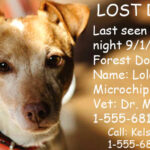What To Do If Your Dog Eats Ham
When your furry friend devours something they shouldn’t, it can be a scary and stressful situation. If your dog eats ham, you may wonder what to do next. While ham is a popular food for many humans, it can pose some risks for dogs, especially if consumed in large amounts or with certain ingredients. In this article, we will explore what you should do if your dog eats ham, including how to assess the situation, what symptoms to watch for, and how to treat and prevent potential health issues.
Assessing the Situation: Is Ham Safe for Dogs?
Before we dive into the details of what to do if your dog eats ham, let’s first clarify whether ham is safe for dogs. The short answer is that it depends on various factors such as the type of ham, the amount eaten, and the dog’s individual health condition and size.
In general, most types of cooked ham are not toxic to dogs but can cause digestive upset such as vomiting, diarrhea, and gas due to their high fat and salt content. Some hams may also contain additives like garlic or onion powder that can be harmful to dogs in large doses. Raw or undercooked ham is more risky as it may contain parasites or bacteria that can lead to serious infections such as salmonella or trichinosis.
If your dog has eaten a small piece of cooked ham without any seasoning or bone fragments, they may be fine and just need some time to digest it. However, if they have eaten a large amount of ham or show any signs of distress, you should take immediate action.
Symptoms to Watch For: How Do You Know If Your Dog Ate Too Much Ham?
When your dog eats ham or any other human food outside their regular diet, they may react differently depending on their tolerance and sensitivity. Some dogs can handle a little bit of ham without any problems while others may have an adverse reaction even to a small amount. Therefore, it’s crucial to observe your dog’s behavior and physical signs after they have eaten ham.
Some common symptoms of ham ingestion in dogs include:
– Vomiting or regurgitation
– Diarrhea or loose stools
– Excessive thirst or urination
– Loss of appetite or refusal to eat
– Lethargy or weakness
– Abdominal pain or bloating
– Excessive drooling or licking
– Changes in breathing rate or pattern
– Seizures or tremors (in severe cases)
If your dog shows any of these symptoms, you should contact your veterinarian immediately. Do not wait for the symptoms to worsen as some health issues can escalate quickly and cause irreversible damage. Your vet may ask you for more information about the type and amount of ham your dog ate, as well as their medical history and current medications.
Treating Ham Ingestion: What Can You Do To Help Your Dog?
Depending on the severity of your dog’s symptoms and the underlying cause of their ham ingestion, your vet may recommend different treatments. Here are some general guidelines that can help you manage your dog’s condition before and after you seek veterinary care:
1. Stay calm and observe your dog: It’s important to avoid panicking or scolding your dog when they eat something they shouldn’t, as this can increase their stress level and make things worse. Instead, stay calm and watch out for any signs of distress.
2. Offer water and bland food: If your dog has mild digestive upset from eating ham, you can offer them small amounts of water and bland food such as cooked rice or boiled chicken. Avoid giving them any more ham or other fatty foods that can worsen their symptoms.
3. Monitor their vital signs: Check your dog’s temperature, heart rate, and breathing rate regularly to ensure they are stable. If you notice any abnormal changes, seek immediate veterinary attention.
4. Follow your vet’s advice: If you take your dog to the vet, make sure to follow their instructions for treatment and follow-up care. They may prescribe medications or fluids to help your dog recover faster and avoid complications.
Preventing Ham Ingestion: How Can You Keep Your Dog Safe?
The best way to deal with ham ingestion in dogs is to prevent it from happening in the first place. Here are some tips on how to keep your dog safe from ham and other human foods:
1. Avoid feeding your dog table scraps: While it may be tempting to share your food with your furry friend, it’s not always a good idea. Many human foods can be harmful or toxic to dogs, even in small amounts. Stick to a balanced and nutritious diet designed for dogs.
2. Store food securely: Make sure that any ham or other human foods are stored in a secure place where your dog cannot reach them. Don’t leave food unattended on the counter or table, as dogs are notorious for scavenging.
3. Train your dog to obey commands: Teaching your dog basic obedience commands such as “leave it” or “drop it” can help you prevent them from eating something they shouldn’t. Practice these commands regularly and reward your dog for following them.
4. Supervise your dog at all times: Always keep an eye on your dog when they are around food or potential hazards such as trash cans or cleaning products. If you have a curious or mischievous dog, consider using baby gates or crates to limit their access.
Conclusion
If your dog eats ham, don’t panic but don’t ignore the situation either. Assess the situation, watch for symptoms, and seek veterinary advice if necessary. Remember that prevention is key to keeping your dog safe and healthy. Keep human foods out of reach, train your dog to obey commands, and supervise them at all times. With proper care and attention, you and your furry friend can enjoy many happy years together.



